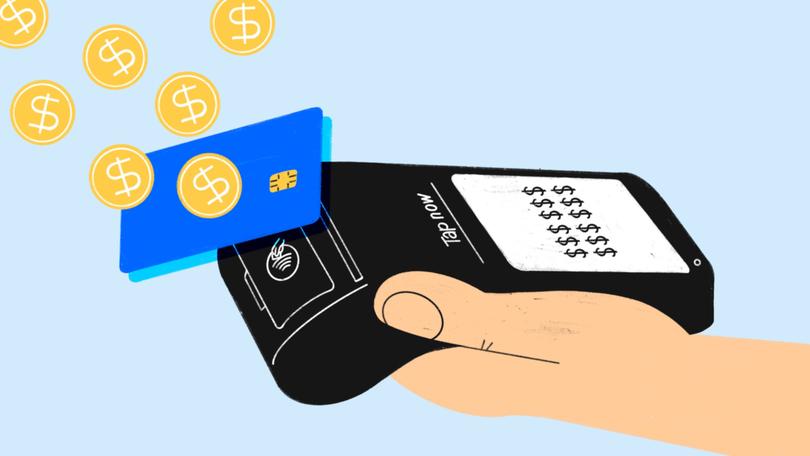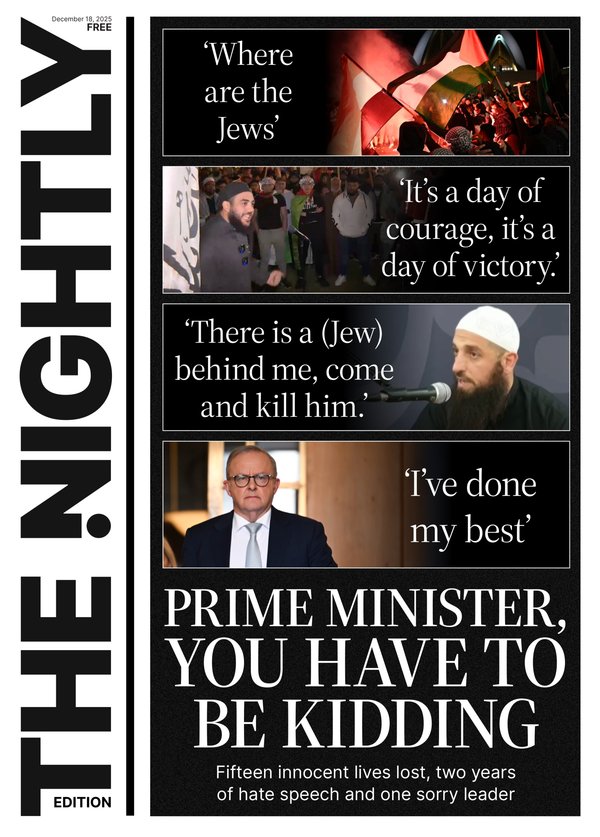MICHAEL USHER: Tap-and-go surcharges are robbing us blind, how are we not enraged?

We’re being robbed blind again by the banks and big financial institutions, and we all seem to be accepting it without an argument.
Why there isn’t white-hot anger over the great rort of card surcharges and fees is beyond me.
It’s not a small scale rort, in my view, it’s enormous — estimated to be costing all of us who tap our phones and cards to pay for pretty much everything these days, about $4 billion dollars a year.
Sign up to The Nightly's newsletters.
Get the first look at the digital newspaper, curated daily stories and breaking headlines delivered to your inbox.
By continuing you agree to our Terms and Privacy Policy.Read that again — $4 billion dollars. Far out.
You want to sit down and work out where you’re going backwards in this cost-of-living crunch? Well, start calculating all the surcharges you’re being slugged every single transaction. It’s hundreds of dollars every year. That should be in our pocket, not supercharging the profits of the banks or Visa or Mastercard or Amex or any of the card providers. The $300 energy rebate you’re getting from the Government probably just gives you back what the banks are taking in these fees.
These surcharges are sneaky. They’re hidden in small cents and fractions of percentages. It’s a stealth strategy to take your money. It’s the banks and card merchants up to their old tricks and it should be banned. In parts of Europe, those fees have already been restricted.
Our Government can act on this. It has the power.
The Reserve Bank has announced it is investigating this whole scheme of surcharging but has been dragging the chain. Only yesterday a junior Labor member rattled the chain about this in Federal Parliament, a sure sign that the Prime Minister and Treasurer want to send a message to the Reserve Bank to speed up and tackle the excessive surcharges and fees before the next election. This could be one way for all of us to keep our own money, instead of being overcharged to use our own money.
This week I’ve been charged anywhere between 5 and 8 cents extra on a $5 coffee using tap-and-go payments. Add all that up over time. The extra few cents turn into dollars fast. Those extra charges above the actual cost of the coffee aren’t profit for the café owner. They’re not allowed to profit from charges forced on them by banks, card operators or the providers of the tap-and-go terminals. That’s heavily regulated by the Australian Competition and Consumer Commission and was a major recommendation by the royal commission into banking.
That extra 5c, 8c, or more is all money being made by the card providers and merchants.
A small business owner friend showed me his monthly statement on all this, provided by his bank. He goes cross-eyed every month trying to understand the way surcharges and fees are applied to half a dozen or so different cards or merchants used by his customers. It’s eight pages of percentage fractions and small amounts of cents.
The bottom line is, the bank charges his business about $2400 in fees every month to process all the electronic banking he needs to sell a product and charge his customers. Almost $30,000 a year! And half of that is a thing called Interchange fees.
To put it simply, it’s a largely automatic and computerised process of transactions between banks and card providers. Overseas, they’ve been subjected to regulation and anti-trust actions. They’re mostly hidden from consumers, and sometimes too complicated for busy small business owners to understand, let alone dispute. They will, however, be subject to the Reserve Bank’s inquiry.
The position of the Australian Banking Association is that Interchange fees are necessary and lower than in other parts of the world. And we’d all allow some charges to cover the cost of security and anti-fraud protection on our transaction details. But what an amazing blind fee to charge in such small ways, on a mass scale, adding up to hundreds of millions of dollars. You can’t help but think this contributes enormously to this big bank and card providers profits.
In the bank’s partial defence, when I reviewed my friend’s monthly statement on interchange fees, his bank listed a mind-boggling 25 different percentage rates imposed on them by Mastercard and 16 different percentage rates for Visa. All depending on what type of card you use to tap-and-go.
Each of the rates is under 1 per cent — a range of fractional fees and charges that all add up, creating an accounting nightmare for business owners, and all passed on to the customer in cents and dollars. No wonder my friend goes cross-eyed every month staring at the transactions on his business bank statement and trying to work out what percentage to add at the point of sale for his customers.
There is a push for a return to cash, but I think that old horse and cart has bolted.
Post-COVID we fully embraced a cashless society. The convenience and safety seemed to be a good step forward.
What we didn’t know is the plastic card providers and banks saw an opportunity to drive up the fees and surcharges and worked quietly on adding fractions of percentages to every single transaction so they could earn a tidy take on your purchase.
We once accepted a slug if we used a credit card, but those fees are standard on everyday transactions. It all seems small until it adds up — to $4 billion dollars a year!
